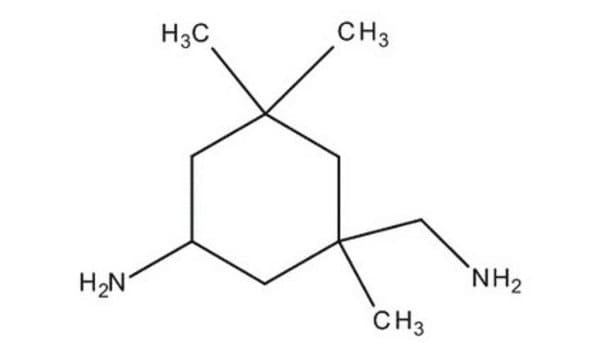If this product has an expiration or retest date, it will be shown on the Certificate of Analysis (COA, CofA). If there is no retest or expiration date listed on the product's COA, we do not have suitable stability data to determine a shelf life. For these products, the only date on the COA will be the release date; a retest, expiration, or use-by-date will not be displayed.
For all products, we recommend handling per defined conditions as printed in our product literature and website product descriptions. We recommend that products should be routinely inspected by customers to ensure they perform as expected.
For products without retest or expiration dates, our standard warranty of 1 year from the date of shipment is applicable.
For more information, please refer to the Product Dating Information document: https://www.sigmaaldrich.com/deepweb/assets/sigmaaldrich/marketing/global/documents/449/386/product-dating-information-mk.pdf
368849
4,4′-Methylenebis(cyclohexylamine)
technical grade, 95%
Sinonimo/i:
4,4′-Diaminodicyclohexylmethane
Scegli un formato
About This Item
Prodotti consigliati
Grado
technical grade
Tensione di vapore
<0.1 mmHg ( 38 °C)
Saggio
95%
Densità
0.95 g/mL at 25 °C (lit.)
Stringa SMILE
NC1CCC(CC1)CC2CCC(N)CC2
InChI
1S/C13H26N2/c14-12-5-1-10(2-6-12)9-11-3-7-13(15)8-4-11/h10-13H,1-9,14-15H2
DZIHTWJGPDVSGE-UHFFFAOYSA-N
Cerchi prodotti simili? Visita Guida al confronto tra prodotti
Categorie correlate
Descrizione generale
Applicazioni
- A curing agent for epoxy resins, facilitating the cross-linking process that leads to the formation of thermoset materials.
- A key component in the synthesis of polyurethane elastomers, which have been investigated for their biocompatibility and mechanical properties, making them suitable for biomedical applications.
- A monomer to synthesize porous organic polymers (POPs) via nucleophilic substitution reactions. These POPs are then tested for their ability to uptake iodine and for their fluorescence sensing performance related to dinitrophenol (DNP).
Avvertenze
Danger
Indicazioni di pericolo
Consigli di prudenza
Classi di pericolo
Acute Tox. 4 Oral - Aquatic Chronic 2 - Skin Corr. 1B - Skin Sens. 1 - STOT RE 2 Oral
Codice della classe di stoccaggio
8A - Combustible corrosive hazardous materials
Classe di pericolosità dell'acqua (WGK)
WGK 3
Punto d’infiammabilità (°F)
318.2 °F - closed cup
Punto d’infiammabilità (°C)
159 °C - closed cup
Dispositivi di protezione individuale
Eyeshields, Faceshields, Gloves, type P3 (EN 143) respirator cartridges
Scegli una delle versioni più recenti:
Possiedi già questo prodotto?
I documenti relativi ai prodotti acquistati recentemente sono disponibili nell’Archivio dei documenti.
I clienti hanno visto anche
-
How can I determine the shelf life / expiration / retest date of this product?
1 answer-
Helpful?
-
-
How is shipping temperature determined? And how is it related to the product storage temperature?
1 answer-
Products may be shipped at a different temperature than the recommended long-term storage temperature. If the product quality is sensitive to short-term exposure to conditions other than the recommended long-term storage, it will be shipped on wet or dry-ice. If the product quality is NOT affected by short-term exposure to conditions other than the recommended long-term storage, it will be shipped at ambient temperature. As shipping routes are configured for minimum transit times, shipping at ambient temperature helps control shipping costs for our customers. For more information, please refer to the Storage and Transport Conditions document: https://www.sigmaaldrich.com/deepweb/assets/sigmaaldrich/marketing/global/documents/316/622/storage-transport-conditions-mk.pdf
Helpful?
-
Active Filters
Il team dei nostri ricercatori vanta grande esperienza in tutte le aree della ricerca quali Life Science, scienza dei materiali, sintesi chimica, cromatografia, discipline analitiche, ecc..
Contatta l'Assistenza Tecnica.















